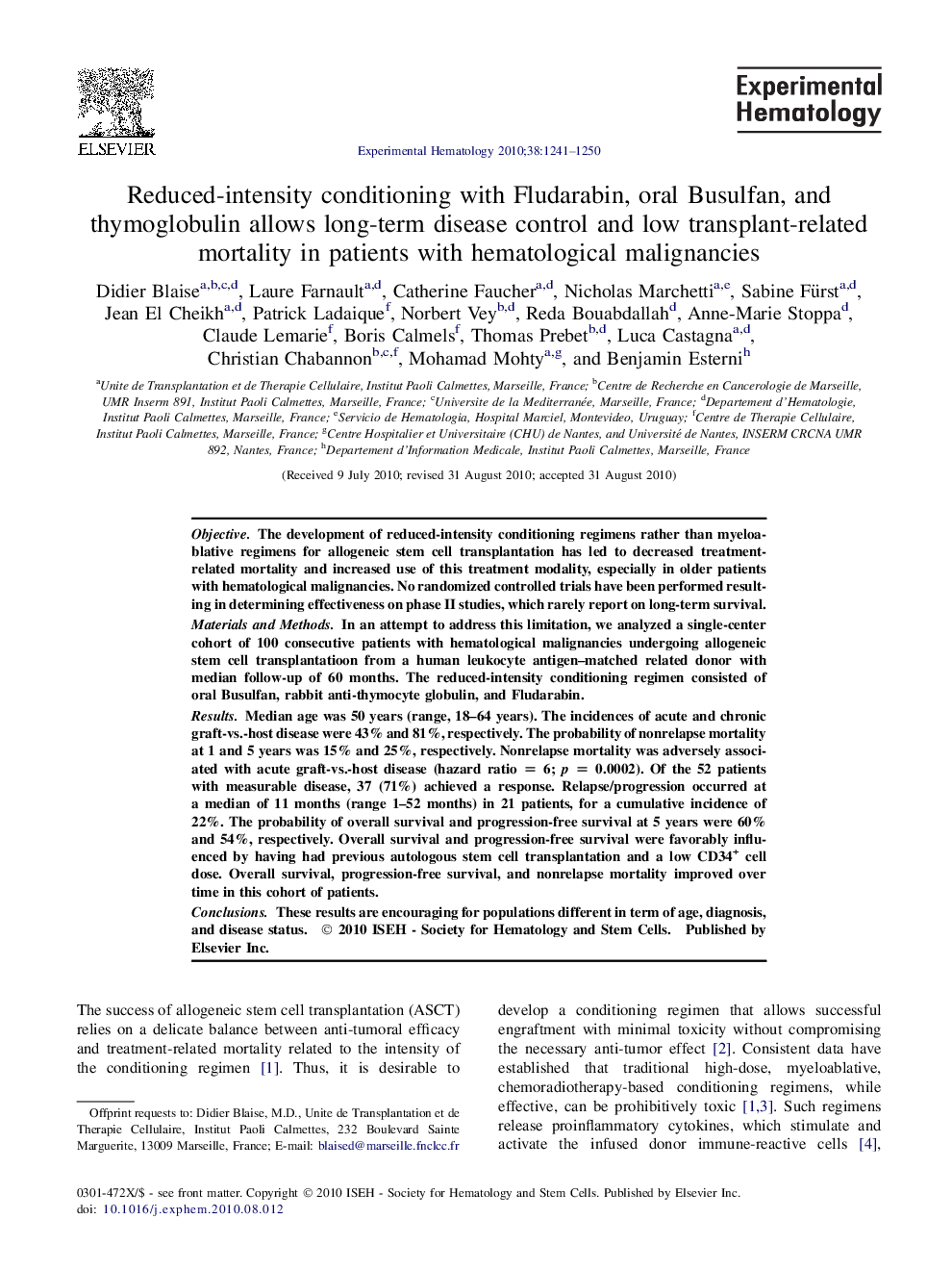| کد مقاله | کد نشریه | سال انتشار | مقاله انگلیسی | نسخه تمام متن |
|---|---|---|---|---|
| 2134494 | 1087475 | 2010 | 10 صفحه PDF | دانلود رایگان |

ObjectiveThe development of reduced-intensity conditioning regimens rather than myeloablative regimens for allogeneic stem cell transplantation has led to decreased treatment-related mortality and increased use of this treatment modality, especially in older patients with hematological malignancies. No randomized controlled trials have been performed resulting in determining effectiveness on phase II studies, which rarely report on long-term survival.Materials and MethodsIn an attempt to address this limitation, we analyzed a single-center cohort of 100 consecutive patients with hematological malignancies undergoing allogeneic stem cell transplantatioon from a human leukocyte antigen–matched related donor with median follow-up of 60 months. The reduced-intensity conditioning regimen consisted of oral Busulfan, rabbit anti-thymocyte globulin, and Fludarabin.ResultsMedian age was 50 years (range, 18–64 years). The incidences of acute and chronic graft-vs.-host disease were 43% and 81%, respectively. The probability of nonrelapse mortality at 1 and 5 years was 15% and 25%, respectively. Nonrelapse mortality was adversely associated with acute graft-vs.-host disease (hazard ratio = 6; p = 0.0002). Of the 52 patients with measurable disease, 37 (71%) achieved a response. Relapse/progression occurred at a median of 11 months (range 1–52 months) in 21 patients, for a cumulative incidence of 22%. The probability of overall survival and progression-free survival at 5 years were 60% and 54%, respectively. Overall survival and progression-free survival were favorably influenced by having had previous autologous stem cell transplantation and a low CD34+ cell dose. Overall survival, progression-free survival, and nonrelapse mortality improved over time in this cohort of patients.ConclusionsThese results are encouraging for populations different in term of age, diagnosis, and disease status.
Journal: - Volume 38, Issue 12, December 2010, Pages 1241–1250